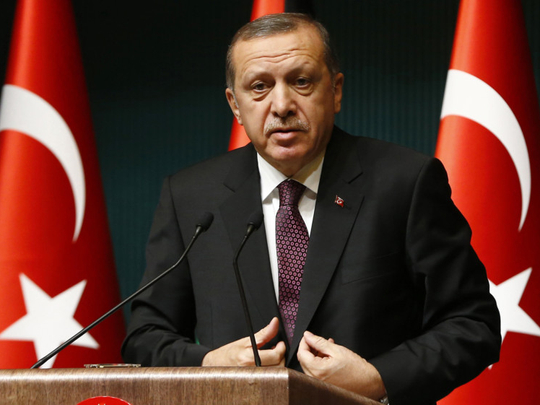
The recent photograph of President Recep Tayyip Erdogan, descending the staircase of his new palace, between rows of soldiers in historic costume has been met with widespread derision, but it is part of a broad and deadly serious attempt to reinvent the Republic of Turkey.
On social media, the image has been remade with everything from Star Wars characters to superheroes as his honour guard. As so often, though, those who laugh at Erdogan (I laughed out loud) underestimate him. The derision was misplaced, but fear would be justified.
Erdogan is reinventing Turkey, which was already remodelled once from the remnants of the Ottoman Empire by Mustafa Kemal Ataturk. The republic’s founder was a true revolutionary. He not only dispatched the sultans and halted the dismembering of Anatolia by the victorious allies after First World War; he also changed Turkish culture by diktat, including dress, structure, alphabet and ideology.
As Erdogan reconfigures the country again, why not include a costumed honour guard to remind the nation of its roots? Any tourist who has watched Trooping the Colour at Buckingham Palace has seen greater historical silliness. As the historians Eric Hobsbawm and Terrence Ranger said in their classic book, The Invention of Tradition, most supposedly ancient traditions are rather recent creations and very deliberate constructions:
The history which became part of the fund of knowledge or the ideology of nation, state or movement is not what has actually been preserved in popular memory, but what has been selected, written, pictured, popularised and institutionalised by those whose function it is to do so.
In this case, that person is Erdogan. His super-sized palace, bigger than Versailles, is part of this reinvention of Turkish tradition (the old presidential seat was Ataturk’s). So are the recent laws to change the nature of education, and his reinfusion of religion into the fiercely secular Turkish state.
And to carry his reconstruction of the country to whatever endpoint he has in view, Erdogan clearly believes he needs all available levers of power. So although he is now the president, Erdogan last week convened a meeting of the cabinet that he used to run as prime minister, shoving aside his pliant successor Ahmet Davutoglu. Still not satisfied, Erdogan reiterated that he wanted to amend the constitution, formalising a transfer of power to the presidency.
The exertion of power extends to speech. Last week, the government pushed a law through parliament that would give individual cabinet ministers the power to block any website within four hours and without a court order.
So strong is the perception of Erdogan’s control that the supposedly independent central bank struggles today to convince investors that it had cut the nation’s interest rate in response to inflationary expectations, rather than because of political pressure from a president who believes for ideological reasons that effective interest rates should be zero.
Add to this, the continued purging of Turkey’s judicial institutions, the jailing and intimidation of its journalists and the debates over free speech in France begin to look quaint by comparison. Erdogan and his supporters do not see anything humorous about their project. Professor Hassan Herken, dean of the Medical faculty at Pamukkale University, resigned after posting the picture of Erdogan and his 16 guards, each representing a former Turkic empire, on Twitter.
“Which Turkish principality is this one wearing a bathrobe?” Herken asked in his post. He said he stepped down because of death threats directed at him and his family.
— Washington Post
Marc Champion writes editorials on international affairs for Bloomberg View.









